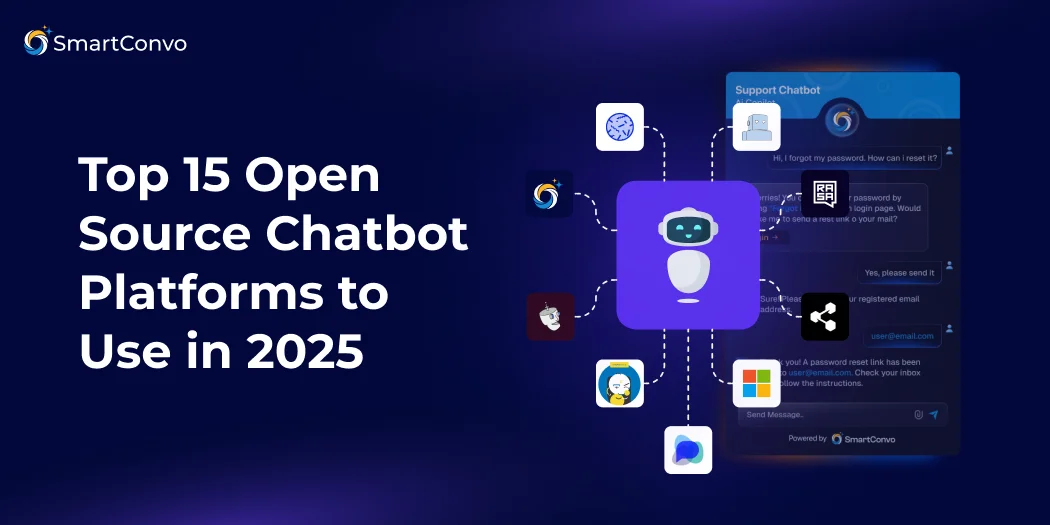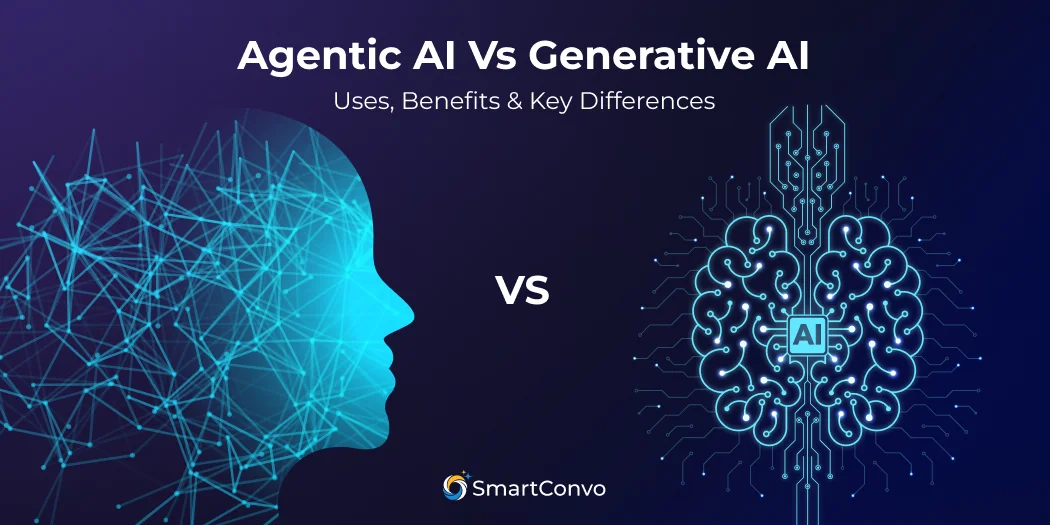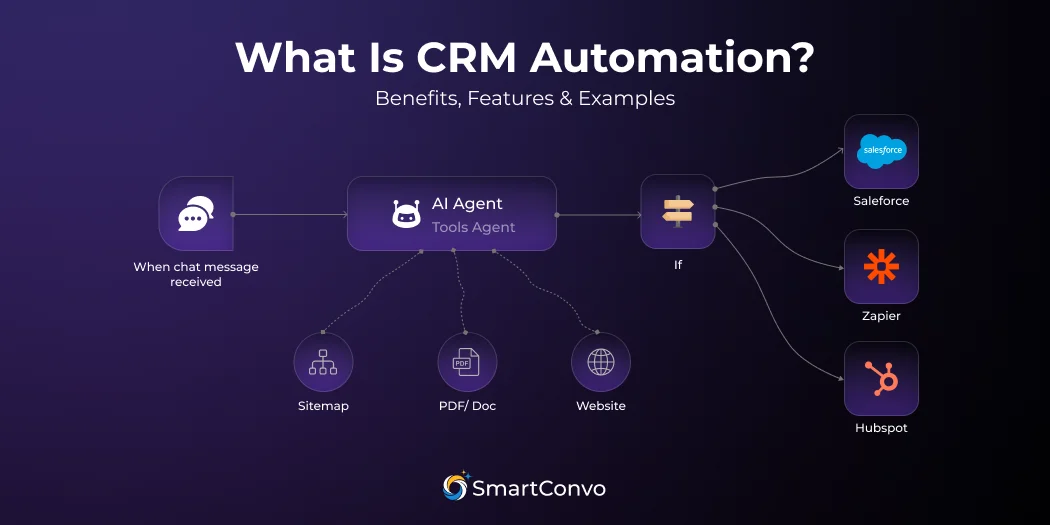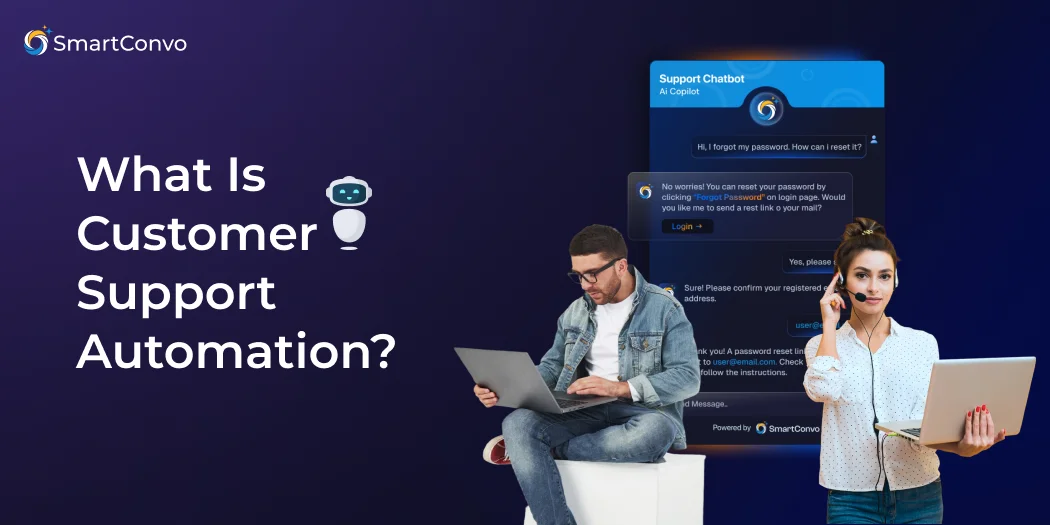These platforms are transforming how businesses, developers, and everyday users interact with technology, offering powerful tools to build conversational AI that’s both cost-effective and highly customizable.
Whether you’re a developer eager to create the next AI sensation, a business owner searching for a budget-friendly yet impactful solution, or a tech enthusiast looking to experiment with cutting-edge tools, open source chatbots bring a delicious blend of flexibility, innovation, and control to the table.
Open source chatbots allow users to access the source code, enabling endless opportunities for customization and integration to meet specific needs.
This ultimate guide breaks down what makes open source chatbot platforms so unique, their key advantages like affordability, adaptability, and transparency. the leading options you should consider in 2025.
From platforms like Smartconvo, there’s a world of possibilities for businesses and developers alike. Additionally, you’ll find practical guidance on how to select the right chatbot for your website, customer support channels, or internal team collaboration..
What Is an Open Source Chatbot?
An open source chatbot is a conversational AI system with publicly-available source code, meaning anyone can download, inspect, modify, and deploy it for their own purposes.
Open source chatbots offer a unique level of transparency and community-driven improvement, fueling rapid innovation and adaptability. open source chatbot software gives developers full control over features, integrations, and data privacy.
You’ll find open source chatbots powering everything from sales chatbots on e-commerce sites, AI-powered customer support, HR assistant automations, task management bots for Slack and Microsoft Teams, and even complex Multi Agent System solutions for business process automation.
Why Choose an Open Source Chatbot Platform?
If you crave flexibility, transparency, and innovative features without big licensing costs, open source chatbot platforms are the way to go. Here’s why they’ve become the go-to choice for developers, tech leaders, and business owners alike:
Cost-Effective
Building chatbots for free is a compelling argument on its own! Open source platforms allow you to build and deploy advanced AI chatbots without expensive vendor lock-ins or usage fees. You invest in development, not licensing.
Full Control & Flexibility
The source code is all yours. Tweak the behavior, integrate with unique backends, customize user experiences, and set your own hosting preferences. You’re not limited by a vendor’s feature roadmap.
Transparency & Security
Want to know how your data is managed or what happens inside those AI black boxes? Open source software means you can audit the code for vulnerabilities or compliance, offering confidence in how your customer conversations are handled.
Innovative Features
Active communities push out updates, plugins, and integrations faster than most closed-source vendors. You often get quicker access to cutting-edge Conversational AI Platforms, AI Answer Generator Tools, and support for channels beyond the typical chatbot website embed.
Open source is not just about getting a chatbot for website free. It’s about owning the experience and joining a passionate global community striving for open, innovative AI.
15 Best Open Source Chatbot Platforms to Try in 2025
The open source chatbot landscape is vast and growing. Here’s a curated list of fifteen leading platforms, each ideal for different use cases—from beginners crafting sales chatbots to enterprises orchestrating customer support across dozens of channels.
1. Smartconvo
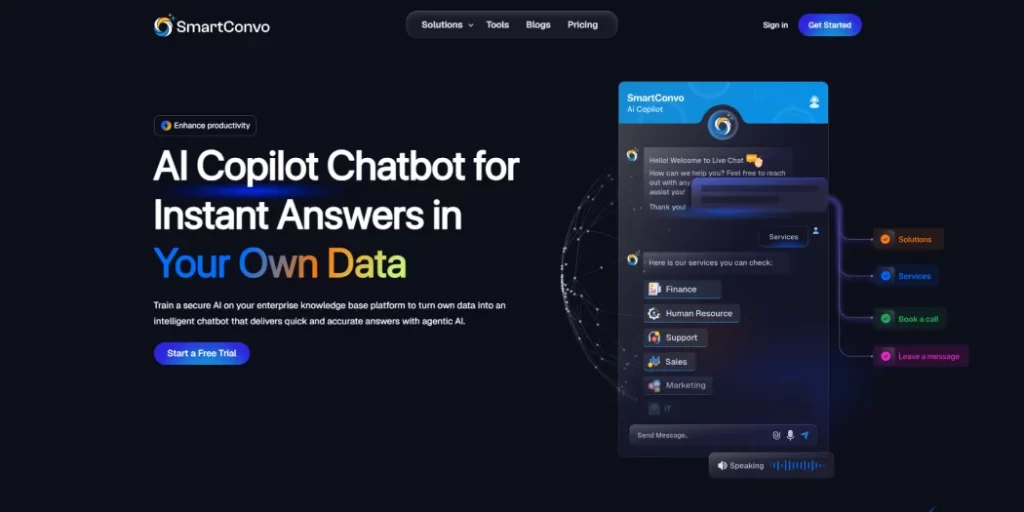
Ideal for: Startups and developers seeking rapid prototyping with deep customization.
Key Features:
- Plug-and-play natural language understanding (NLU)
- Modular dialog management
- Pre-built channel adapters (web, Slack, WhatsApp)
- Easy Docker deployment
- Built-in analytics dashboard
Why Try It:
Smartconvo lets you create chatbots for free without sacrificing sophistication. Its modular setup means you can integrate with everything from Document AI tools to AI Agents managing workflow automation. Rapidly prototype, deploy, and iterate, all while keeping your codebase open and auditable.
2. Rasa
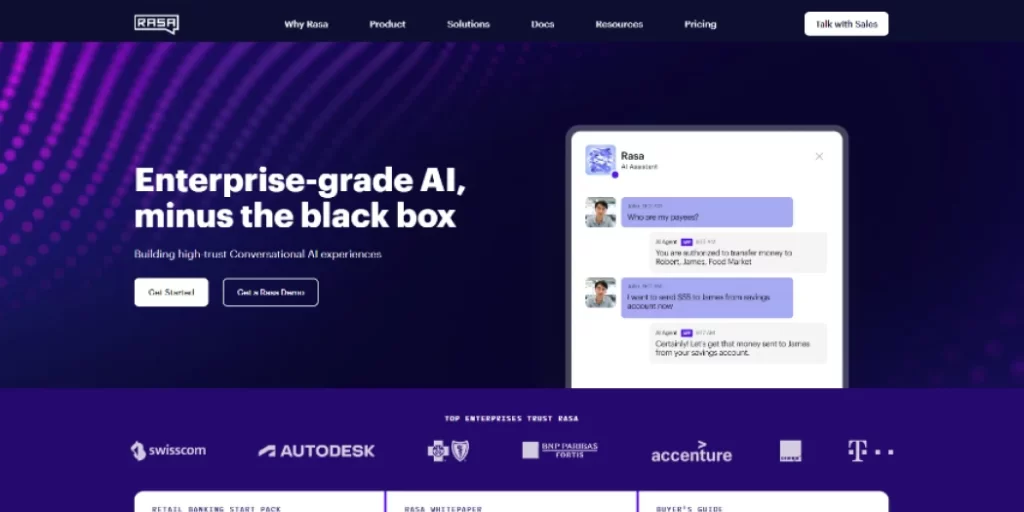
Ideal for: Enterprises needing robust conversational AI with advanced NLP.
Key Features:
- Industry-leading NLU for contextual conversations
- Scalable orchestration of chatflows
- Integration-ready with voice and text channels
- Extensive documentation and large community
- Connects to third-party Generative AI Integration engines
Why Try It:
Rasa offers a full-stack, production-grade open source chatbot framework, ideal for building customer support chatbots and voice-based assistants. Used by major brands, it provides enterprise-grade security and flexibility.
3. Botpress
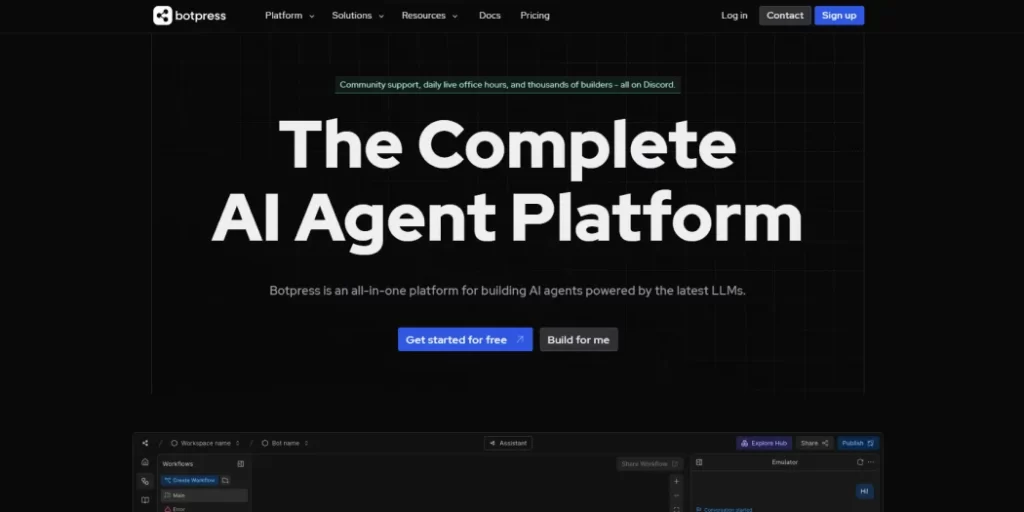
Ideal for: Teams wanting a drag-and-drop builder with AI integration.
Key Features:
- Visual flow editor
- NLU and machine learning modules
- Built-in analytics
- Integration with AI services for richer conversations
- Supports hosting on-premise or cloud
Why Try It:
Botpress is a flexible chatbot framework with a modern, developer-friendly UX. It’s especially great for organizations with mixed developer and business analyst teams who want to collaborate.
4. ChatterBot

Ideal for: Developers exploring conversational AI basics and rapid chatbot prototyping.
Key Features:
- Python-friendly library
- Self-learning through conversation history
- Easily extendable via plugins
- Clean API for integration with your chatbot website
Why Try It:
ChatterBot is the perfect sandbox if you’re learning how to create a chatbot with natural language understanding. Its simple API makes experimenting with conversation logic a breeze.
5. DeepPavlov
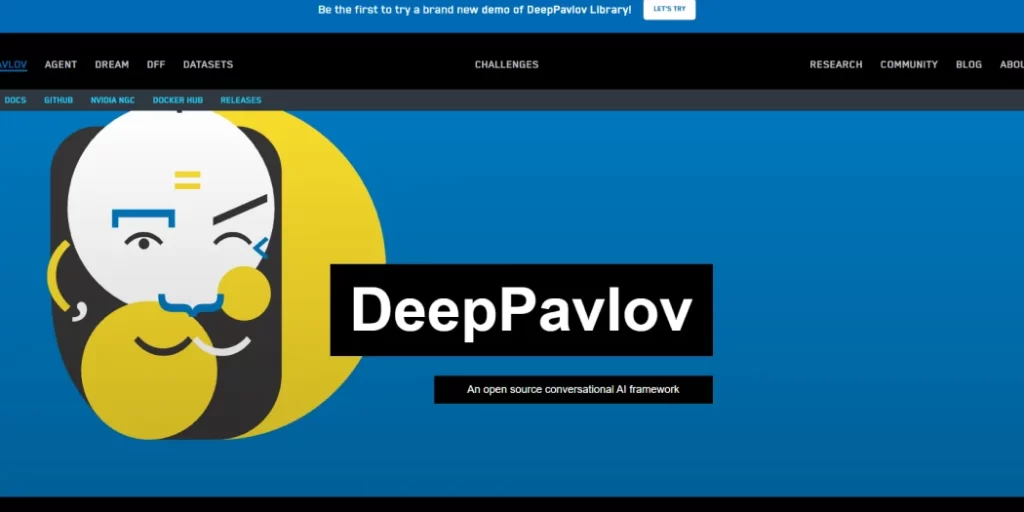
Ideal for: Research teams and advanced AI enthusiasts.
Key Features:
- Powerful NLU and NLG modules
- Supports multi-turn dialogue
- Integrates with the latest deep learning frameworks
- Pre-trained conversational models
- Backed by academic research
Why Try It:
DeepPavlov provides building blocks for cutting-edge conversational AI research. It’s ideal for custom language models or complex domain-specific bots. Deploy powerful NLP with plenty of flexibility, especially for non-English languages.
6. Microsoft Bot Framework
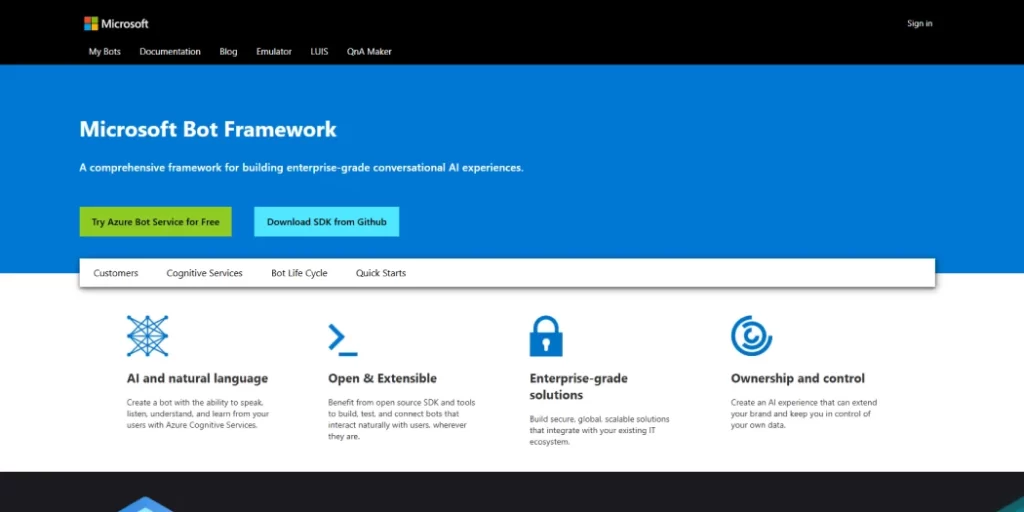
Ideal for: Enterprises and developers needing seamless connection to Microsoft services.
Key Features:
- Supports dozens of channels (Teams, Skype, SMS, web, etc.)
- Rich SDKs for multiple languages
- Integrates with Cognitive Services (LUIS, QnA Maker)
- Scales from hobby projects to enterprise workloads
Why Try It:
Microsoft’s chatbot framework offers deep enterprise integrations, ideal for organizations already using Azure or Microsoft 365. It’s a favorite for building an HR chatbot or automating business process workflows.
7. Botkit
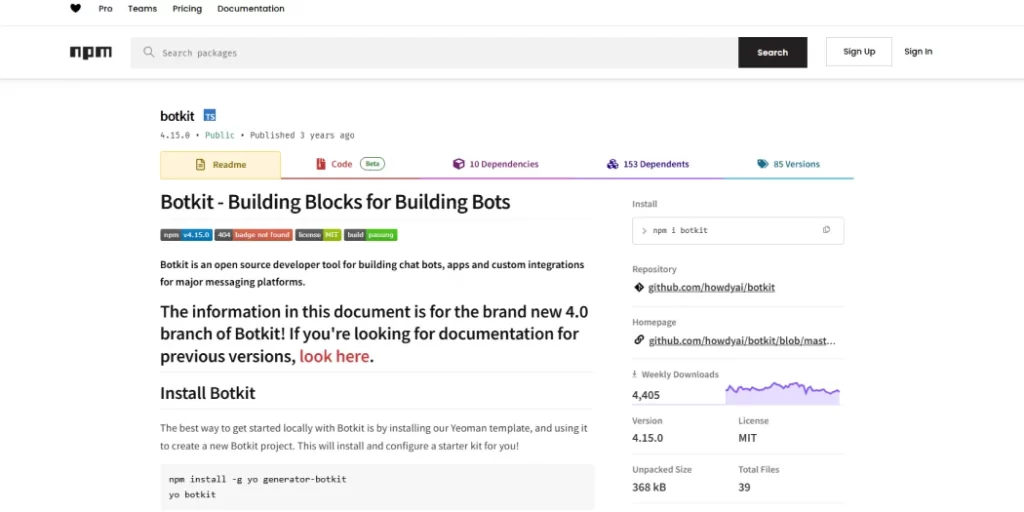
Ideal for: Developers building bots for Slack, Facebook Messenger, and Teams.
Key Features:
- Node.js framework
- Hubot-style plugins
- Reusable conversation patterns
- Real-time message processing
- Extensive integrations
Why Try It:
Botkit is celebrated for its simplicity and directness. With extensive integrations and documentation, it’s great for adding conversational bots into collaborative team environments.
8. Wit.ai
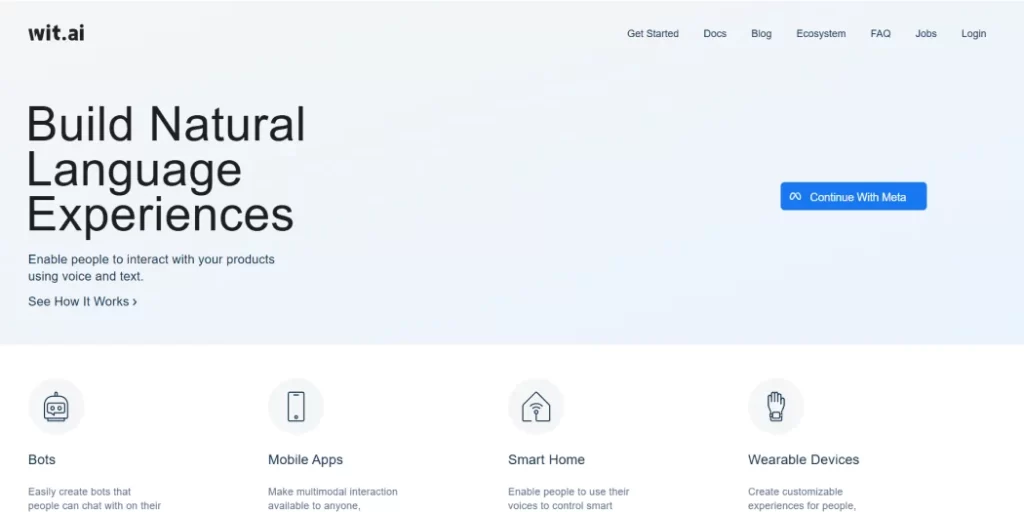
Ideal for: Voice-based projects and real-time conversational applications.
Key Features:
- Natural language processing for text and speech
- Webhooks for smart app connections
- Trains on custom intents/entities
- Cloud-hosted with open API
Why Try It:
Wit.ai lets you tap into Facebook’s NLP prowess and rapidly spin up “understanding” for custom voice or chat experiences. It’s particularly powerful for unique language-based user journeys.
9. OpenDialog
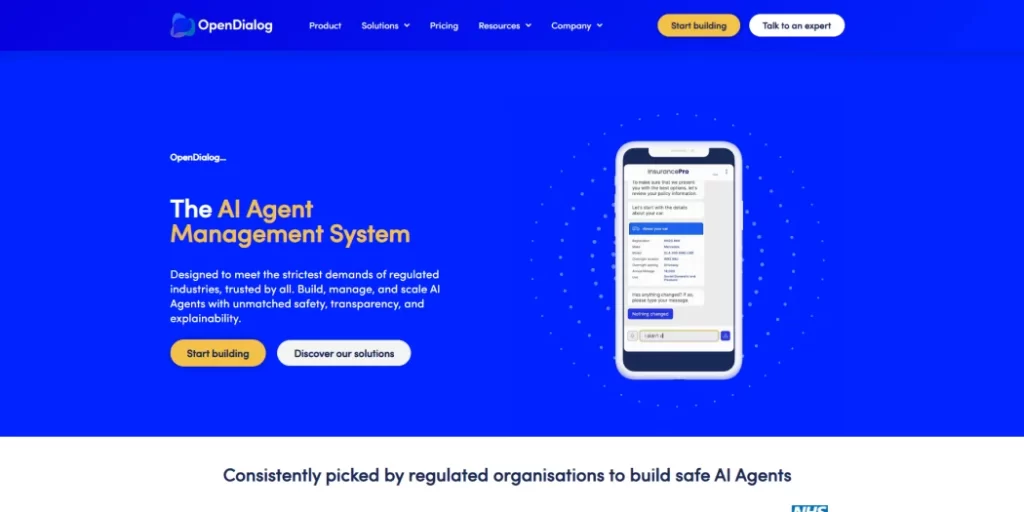
Ideal for: Businesses seeking dialogue design tools plus open source flexibility.
Key Features:
- No-code conversation builder
- Adaptive dialogue engine
- Supports complex conversational flows
- Vast plugin ecosystem
Why Try It:
OpenDialog provides both a graphical interface and a powerful conversational ai backend. Non-developers can design flows while engineers extend the bot with code.
10. Botanic
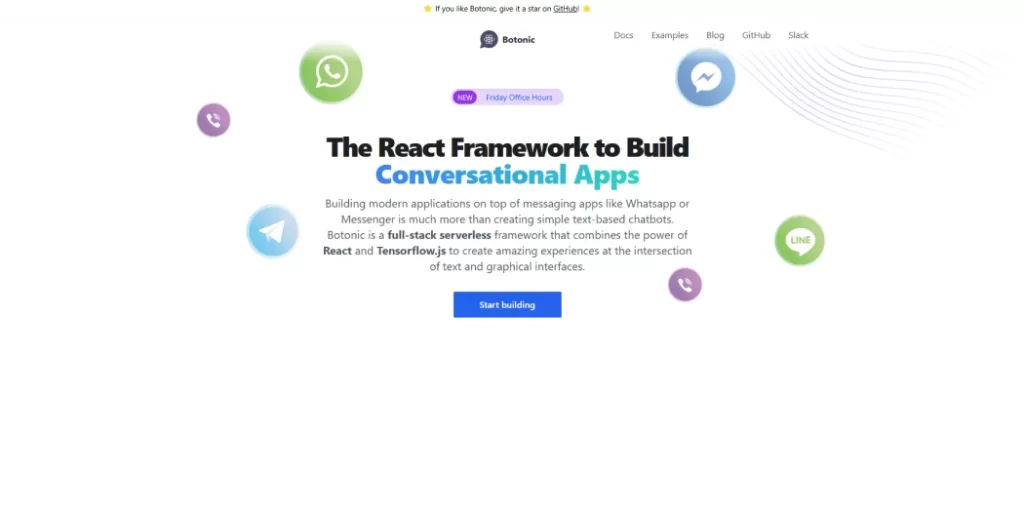
Ideal for: Hybrid voice and text chatbots with a focus on natural conversations.
Key Features:
- Voiceflow-like builder
- Support for speech and text channels
- Integration-ready with IoT devices
- Strong community support
Why Try It:
Botanic delivers a creative spin on chatbot development, supporting multi-modal experiences perfect for IoT, smart home, and hybrid apps.
11. HubSpot Conversations
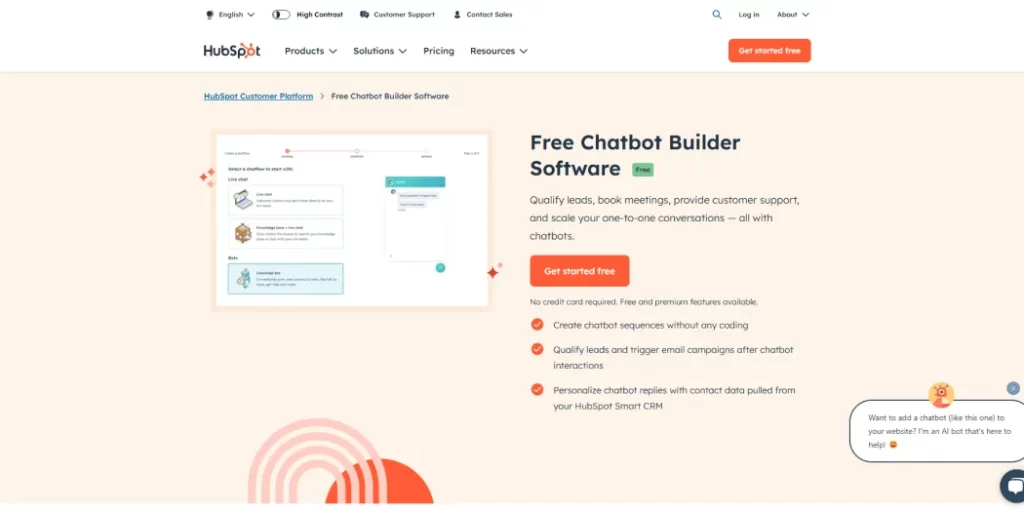
Ideal for: Marketers and sales teams looking for open source, CRM-connected chatbots.
Key Features:
- Integrates directly with HubSpot’s sales and support tools
- Smart lead capture and qualification
- Custom chat widgets
- Reporting and analytics dashboard
Why Try It:
HubSpot’s open source chatbot component brings inbound marketing directly to your website. Connects naturally to Sales Chatbot automations and helps nurture leads.
12. Claudia Bot Builder
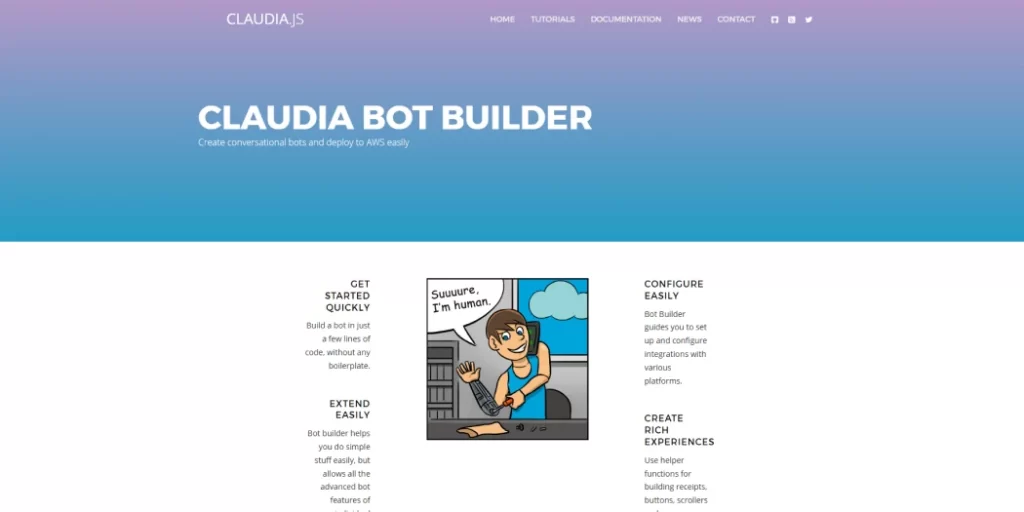
Ideal for: Serverless chatbot deployment and rapid bot API integration.
Key Features:
- Focus on AWS Lambda-based deployments
- Automatically sets up webhooks and APIs
- Node.js support
- CLI-based setup
Why Try It:
Claudia makes it delightfully easy to deploy a chatbot for website free, leveraging AWS’s pay-for-usage infrastructure. Great for experiments and scalable business workflows.
13. Tock

Ideal for: Large-scale, multilingual conversational AI.
Key Features:
- Supports voice and messaging channels
- Multilingual NLU
- Visual conversation flow builder
- Enterprise-grade data management
Why Try It:
Tock gets noticed for handling complex multilingual requirements and orchestrating hybrid AI/human workflows. This is the backbone of many multinational brands’ customer support chatbots.
14. BotMan
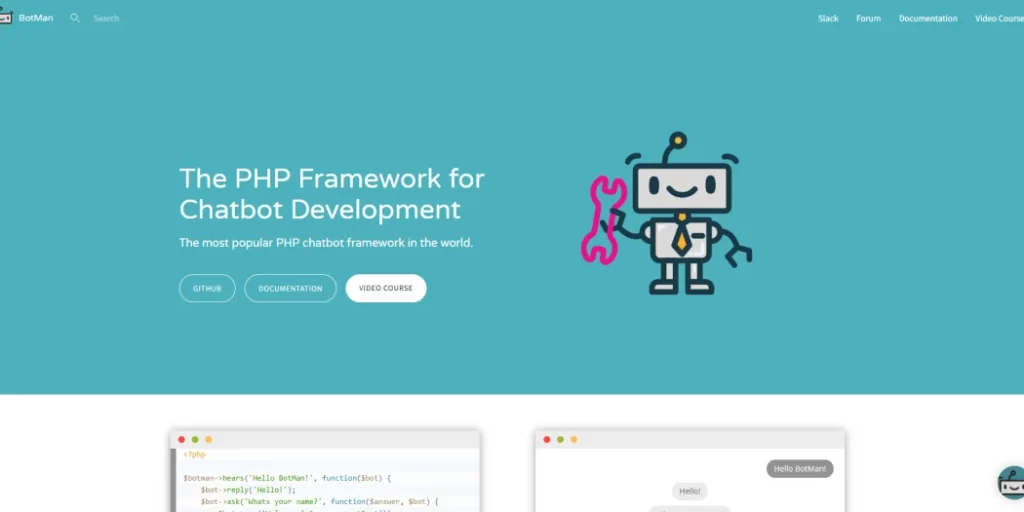
Ideal for: PHP developers looking to add conversational AI to their stack.
Key Features:
- Laravel-friendly
- Modular architecture
- Quick set up for web, Slack, Facebook
- Strong, supportive community
Why Try It:
BotMan lets PHP developers bring conversational ai to their sites and apps, including chatbot website widgets and backend integrations. It offers a familiar environment for Laravel fans.
15. Bottender
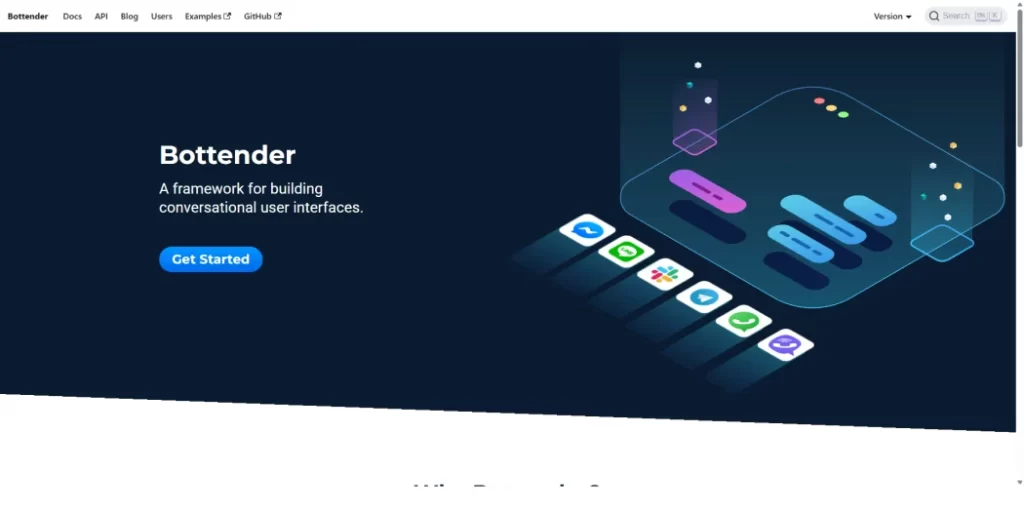
Ideal for: Building strong cross-platform bots using JavaScript/TypeScript.
Key Features:
- Unified API for Messenger, Slack, Telegram, LINE, and more
- Modern JavaScript architecture
- Flexible plugin system
- Simple and expressive configuration
Why Try It:
Bottender is loved for its focus on developer experience. If your team is invested in JavaScript/TypeScript, Bottender is a top choice for integrating with Conversational AI Platforms and extending with Generative AI Integration.
How to Choose the Best Open Source Chatbot Software for You
Every organization’s needs are unique, but a few central factors should guide your selection process for a chatbot framework. Here’s how to zero in on your ideal platform and start reaping the benefits of conversational AI.
1. Define Your Use Case
Are you automating sales with a chatbot for website free? Improving customer support? Building a Multi Agent System or developing an HR chatbot for internal comms? Pinpoint your key goal so you can match features, integrations, and compliance needs.
2. Assess Coding Requirements
Some chatbot frameworks are code-heavy and require advanced development skills (like Rasa and DeepPavlov), while others provide drag-and-drop tools for business users (like Botpress or OpenDialog). Evaluate your team’s technical expertise and available development resources.
3. Consider Deployment Needs
Do you want to self-host for full data control, or does your IT policy allow for cloud deployment? Open source chatbot frameworks typically offer both options, but check specific requirements around hosting, scaling, and security.
4. Explore Integrations
Your chatbot may need to connect with CRM, ERP, Document AI, or other business systems. Assess the ecosystem of plugins, APIs, and out-of-the-box connectors available for each platform.
5. Evaluate Channel Support
Will the bot live exclusively on your chatbot website, or does it need to operate across Slack, WhatsApp, Facebook Messenger, SMS, or even voice assistants? Look for robust multi-channel support.
6. Check Community and Documentation
Active communities and thorough documentation make development and troubleshooting smoother. Look for platforms with up-to-date docs and vibrant user forums to accelerate learning and deployment.
7. Security and Data Management
Ensure your chosen chatbot framework supports the necessary data privacy, compliance, and security controls your organization requires. Open source means you can directly audit these aspects. By evaluating your options through this lens, you’ll quickly find the best fit for your goals and resources.
No Credit Card Required | 14 days Free Trial
Build Your Chatbot
Conclusion
Open source chatbot platforms are opening the door for innovative digital experiences and business automation. With the right chatbot framework, you get to drive the roadmap, control your users’ experience, and customize integrations to your needs. Want to take your first step?
Review your use case, match it to the ideal platform on this list, and download the code for a test run. You’ll quickly experience the thrill of building custom chatbots for free while leveraging a global community’s cutting-edge contributions. For more insight on advancing conversational AI in your business, explore our guides on Document AI, Multi Agent System design, and the next wave of AI Agents and customer support automation.
Frequently Asked Questions (FAQ)
Not at all! Many platforms now provide visual builders or step-by-step guides. If you have basic coding skills, libraries like ChatterBot or Botkit make it simple. For enterprises, frameworks like Smartconvo and Microsoft Bot Framework offer advanced features but require more setup.
The software and source code are free for commercial and personal use, thanks to open source licenses. However, you’ll still need to budget for hosting, potential development costs, and any paid integrations.
For ease of use and strong website widgets, try Botpress, Smartconvo, or BotMan. They all offer visual design tools with straightforward integration.
Open source often means access to active developer communities, forums, Slack channels, and public documentation. Enterprise editions from projects like Rasa and Microsoft Bot Framework even offer premium support.
By choosing an open source platform, you’re able to audit and adjust the codebase for compliance and security. Always partner with security experts and follow best practices around data handling and regular code review.




